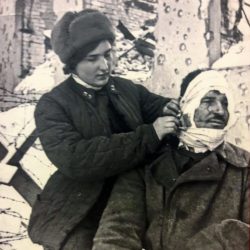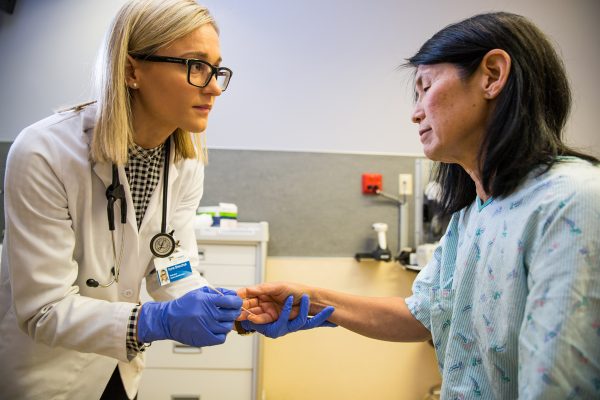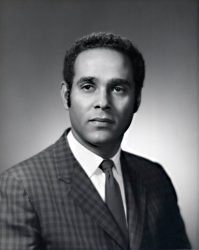In August 2018, Iryna Kylyukh graduated from MEDEX Northwest’s Seattle Class 50. Iryna’s walk across the stage of UW’s Kane Hall to receive her diploma and claim the title of Physician Assistant completed a major step on a path that began as a 15-year-old’s decision to join the healthcare profession. But a closer look into Iryna’s story reveals a journey that reaches further back to her family’s former home in Ukraine. It’s there, in the small village of Sobishchytsi, that Iryna’s mother Lyudmila Kylyukh made her own decision to make a living caring for others. She would become a feldsher.
Feldshers are to a large degree professional equivalents of physician assistants: non-physician providers tending to the needs of both rural and urban patients in primary care and specialized settings. This is no accident, as feldshers were among a number of healthcare professionals operating around the globe that caught the attention of early developers of the PA profession in the United States back in the late 1960s and early 1970s. Feldshers remain essential components of healthcare systems in Russia and the countries of the former Soviet Union, including Ukraine, where Lyudmila Kylyukh spent 30 years as a community-based feldsher.
In the shared stories of Lyudmila and Iryna Kylyukh, we celebrate the passing of the torch from one healthcare professional to another, from a mother to her daughter. And along the way, we trace the historical connections between healthcare professions: from the feldsher to the physician assistant.
Responding to a Crisis in Healthcare
The development of the PA profession came about at a time in the United States when healthcare was hitting a point of crisis. At the center of the crisis was a shortage of doctors. This shortage was felt just about everywhere in the country, but especially so in the rural areas of the country, where fewer and fewer docs were burdened with more and more patients. Many urban centers across the US were also experiencing the urgency of an increasing population in need of medical care and not enough providers to reach them all.

As a student, Mark Patterson of MEDEX Seattle Class 1 did his clinical rotation in rural Tonasket, WA in 1969.
The causes of these shortages had plenty to do with the significant social, cultural and political shifts that marked the day. More particularly, the rise of physician specialization after World War II placed an increased strain on the numbers of generalists or ‘primary care’ docs. [1]. And the passage of Medicare/Medicaid Act of 1965 had an immediate impact on the situation by increasing the numbers of Americans, especially among previously marginalized groups, who were newly eligible for medical coverage. As the language of the time would have it, the challenge was on to solve “the problem of medical manpower and the deployment of physician skills to the population … in a changing climate of medical care.” [2]
In an attempt to meet this challenge, a number of alternative models were sought out and discussed as the 1960s gave way to the 1970s. Beyond the most obvious, but ultimately least practical of responses – train more doctors, fast! – these studies came to focus on the potential of what were variously labeled “mid-level providers,” “medical associates,” “physician extenders,” or “physician’s assistants.” At the heart of these alternative practices was just what the overburdened U.S. healthcare system needed:
“[A] number of leaders began to articulate what most physicians already knew: much of what the doctor does each day could be carried out by specially trained non-physicians, working alongside doctors as part of the team.” [3]
The Example of Feldshers

A field surgeon or feldsher, Lyudmila Grishina, bandages a wounded soldier at Stalingrad, 1943. During WWII feldshers were deployed at the front.
Among the various models for “non-physician” care that were studied was that of the feldsher. With historical precedents in century 15th century Germany and 18th century Prussia, feldshers came to serve as military medics, in effect, in Czarist Russia. By the 1920s, feldshers became more formally included in the Soviet healthcare system as mobile healthcare providers primarily in rural areas. Since the collapse of the Soviet Union, feldshers have continued to serve as essential components in the rural healthcare strategies of Russia, Ukraine, and other former Soviet-bloc countries.
While there have been variations in the training and practice of feldshers over time, the fundamental role of a feldsher has remained that of a healthcare provider who can attend to the vast majority of medical needs among patients in primarily rural settings without the immediate need for attending physicians. And it was this feature that caught the imaginations of those in the US who were searching for new ideas and approaches to addressing the crisis of care.
It is certain that Dr. Richard Smith, the founder of MEDEX Northwest, had the feldsher in mind as he and his colleagues created the nation’s second PA program back in 1969. Looking back, Smith frequently cited feldshers – alongside other examples of “non-physician” providers that he had observed in his travels to Cuba, Nigeria and Native American communities in the western United States – as examples of healthcare providers that were incorporated into the MEDEX model of PA education and training.
And so, in a very real sense, Iryna Kylyukh’s walk to claim her degree and to embrace her place in the world as a MEDEX Northwest PA is deeply rooted not only in her mother Lyudmila’s story, but in the very history of the MEDEX program, and so the PA profession itself.
See the full interview with Lyudmila Kylyukh here.
References:
[1] Thomas E. Piemme, et al., The Physician Assistant: An Illustrated History, Acacia Publishing Inc: Gilbert, AZ, 2013, p. 2.
[2] Patrick B. Storey, M.D., The Soviet Feldsher as a Physician’s Assistant, U.S. Department of Health, Education and Welfare: Washington DC, February 1972, p. 1.
[3] Thomas E. Piemme, et al., The Physician Assistant: An Illustrated History, Acacia Publishing Inc: Gilbert, AZ, 2013, p. 2.

